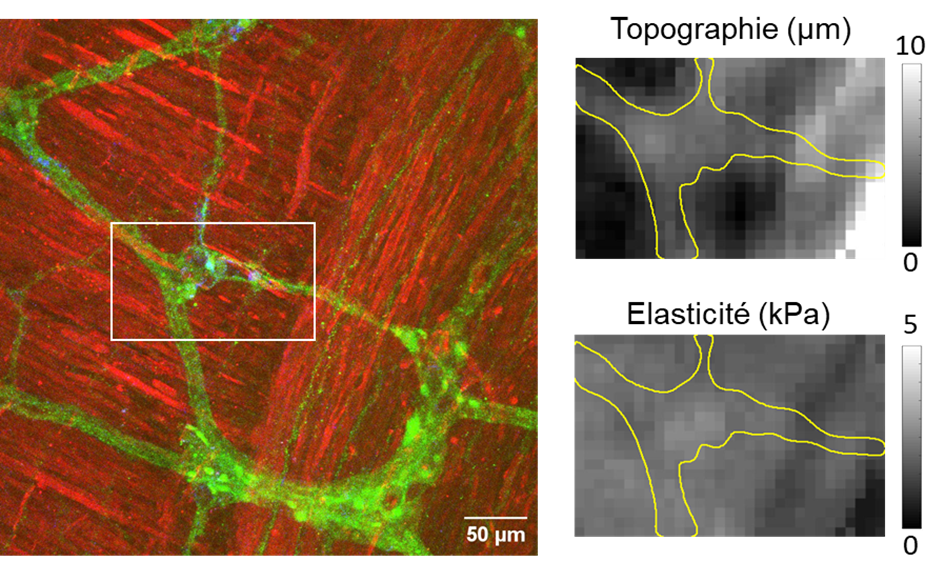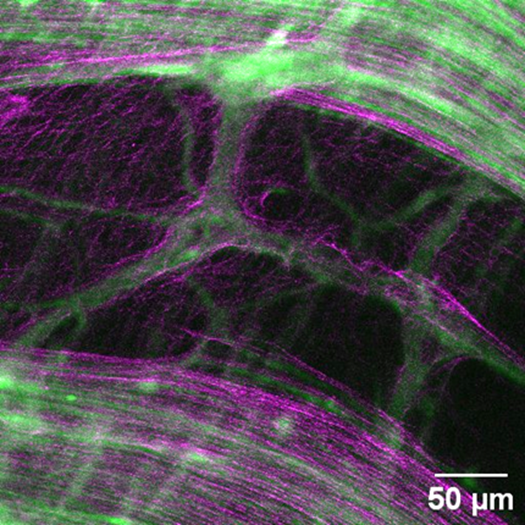The Ladoux-Mège team, the MSC laboratory, and the Cochin Institute have collaborated on a new article published in Biophysical Journal:
The enteric nervous system is 10 times stiffer than the brain
The intestine is the only organ in our body with a quasi-autonomous innervation, the enteric nervous system, commonly referred to as the “second brain.” The brain and spinal cord are inherently soft tissues, protected from mechanical shocks by the skull and spine. In contrast, the enteric nervous system is embedded in an elastic matrix that undergoes significant deformation under the pressure of food boluses and intestinal contractile waves. Does the second brain have special mechanical properties to cope with these stresses? This is the question being addressed today by researchers at the Complex Systems Matter Laboratory, the Jacques Monod Institute, the Cochin Institute, and the National Institute for Agricultural Research in an article published in the journal Biophysical Journal.
The enteric nervous system takes the form of a network of nerve and glial cells, whose bodies form the nodes and whose axon bundles form the connections. The entire network is sandwiched between two layers of muscle. The researchers first peeled this nerve-muscle complex using fine tweezers and a cotton swab to flatten it. They then mapped its elastic properties at the micrometric scale using an atomic force microscope. This device, equipped with a microscopic lever, applies controlled pressure at each point of the sample to test its resistance.
“Having used the atomic force microscope extensively during my PhD thesis, and having worked on the enteric nervous system for 10 years, it was either me or no one,” comments Nicolas Chevalier, a researcher at the CNRS, lead author of the study and “big fan of andouillette.” The researchers first confirmed that the probe reproduced the correct topography of the nervous system. However, the elasticity of the nervous system did not differ from that of muscle, at around 3-4 kPa, which is 10 times greater than that of the brain!

Figure 1. Left: Enteric nervous system in green (neurons) and blue (glia) on its bed of muscle (red). Right: The topography of the nerve ganglion (boxed in white) is clearly visible, but its elasticity is the same as that of the muscle.
To understand the origin of this high mechanical resistance, researchers imaged their preparation using an advanced photonic imaging method called second harmonic generation. This revealed the presence of a cocoon of collagen fibers surrounding the entire nerve network, which could be the cause of this unique mechanical strength. The researchers now believe that malleable glial cells may play a role in ganglion creep, preventing synaptic connections from breaking during rapid deformation.

Figure 2. Collagen shell (magenta) revealed by second harmonic microscopy, surrounding a nerve ganglion and its axonal extensions.
Référence :
“The enteric nervous system is ten times stiffer than the brain” Nicolas R. Chevalier, A. Peaucelle, T. Guilbert, P. Bourdoncle, W. Xi Biophysical Journal, 2025, accepted

